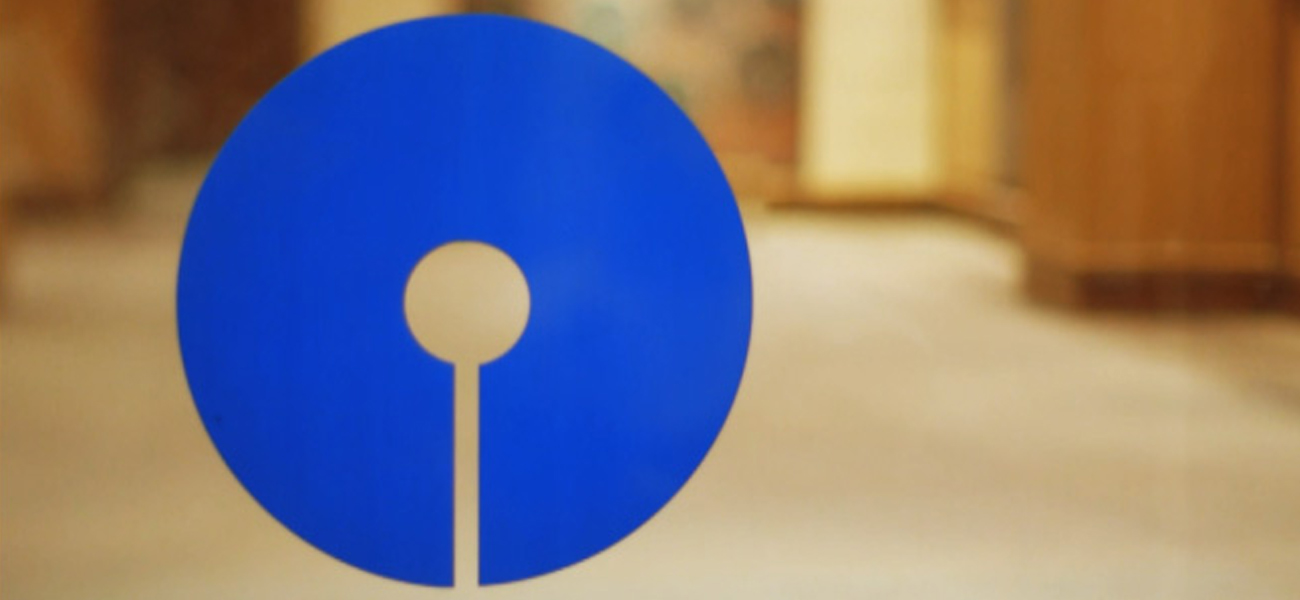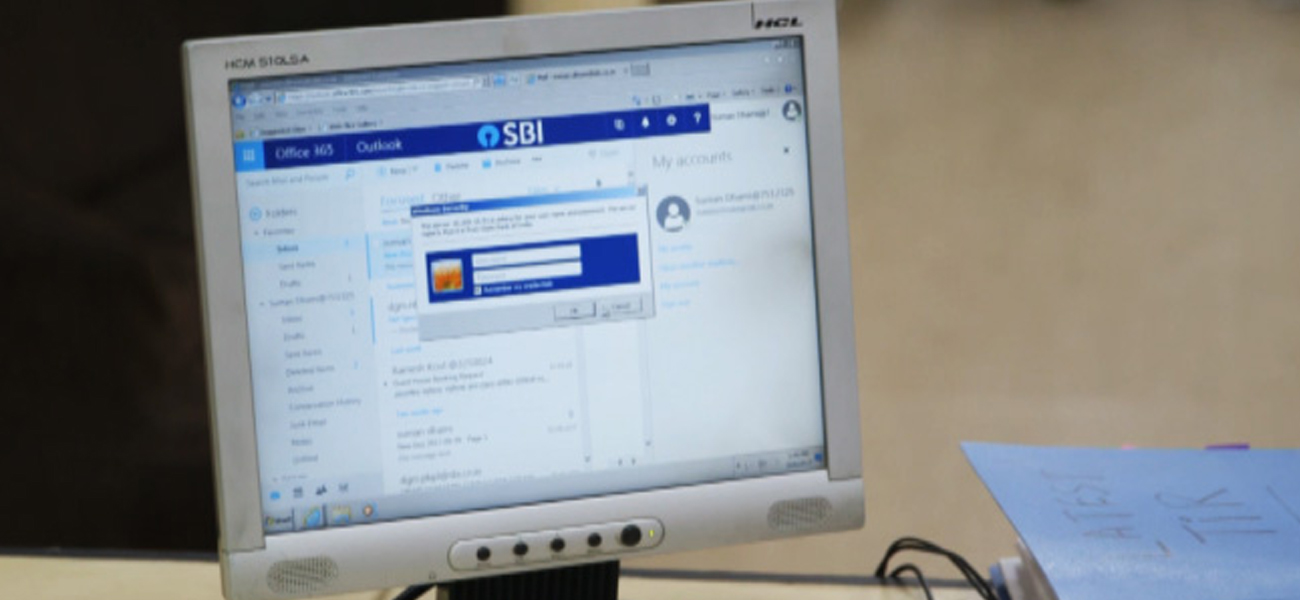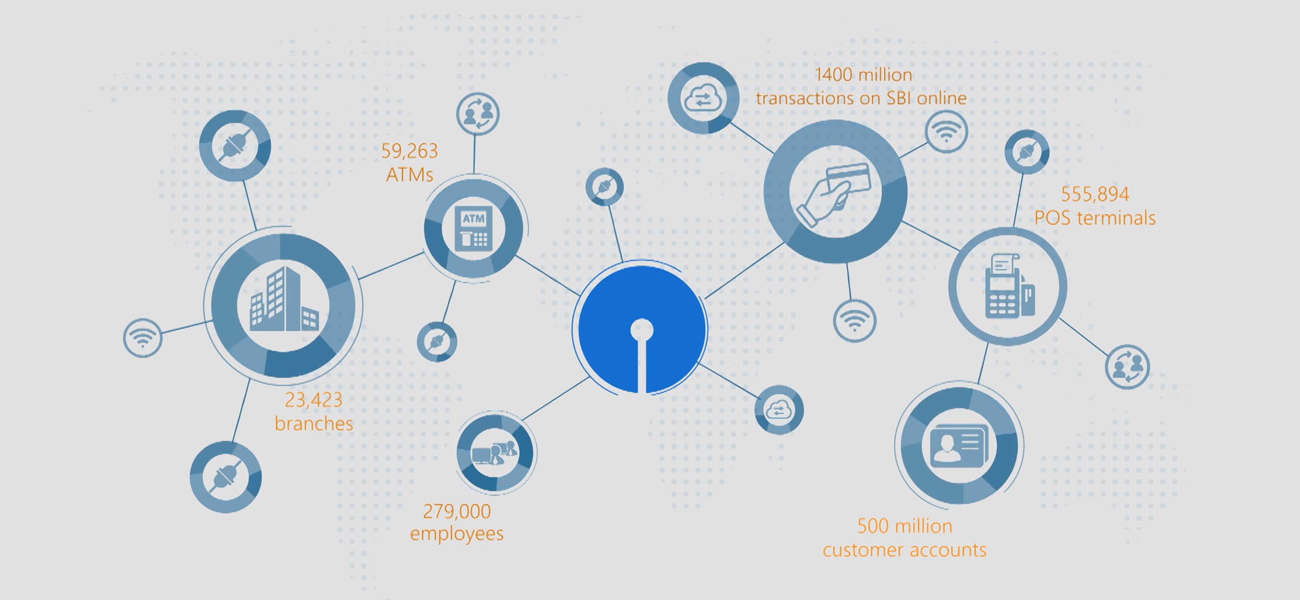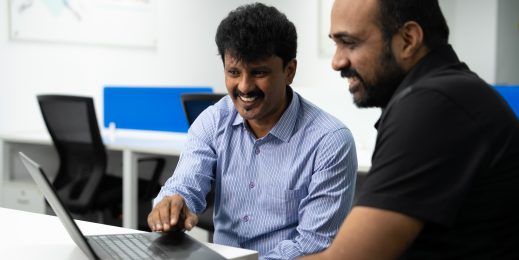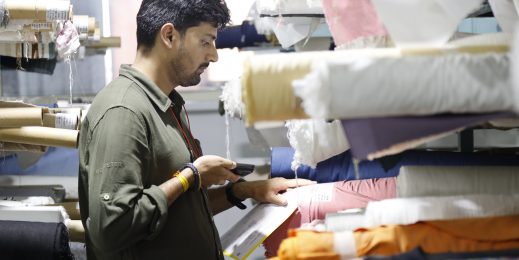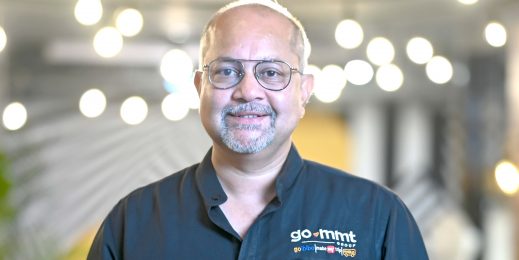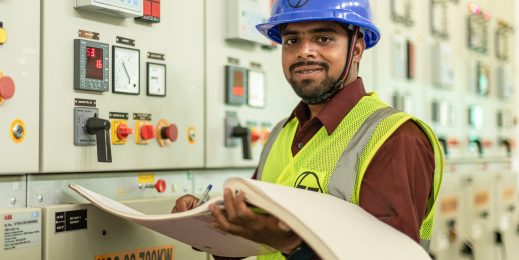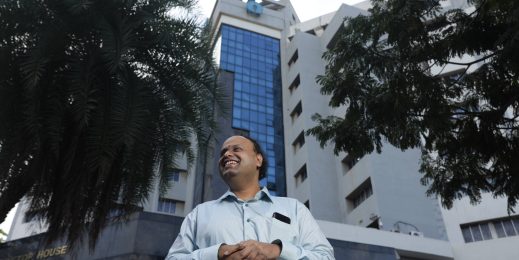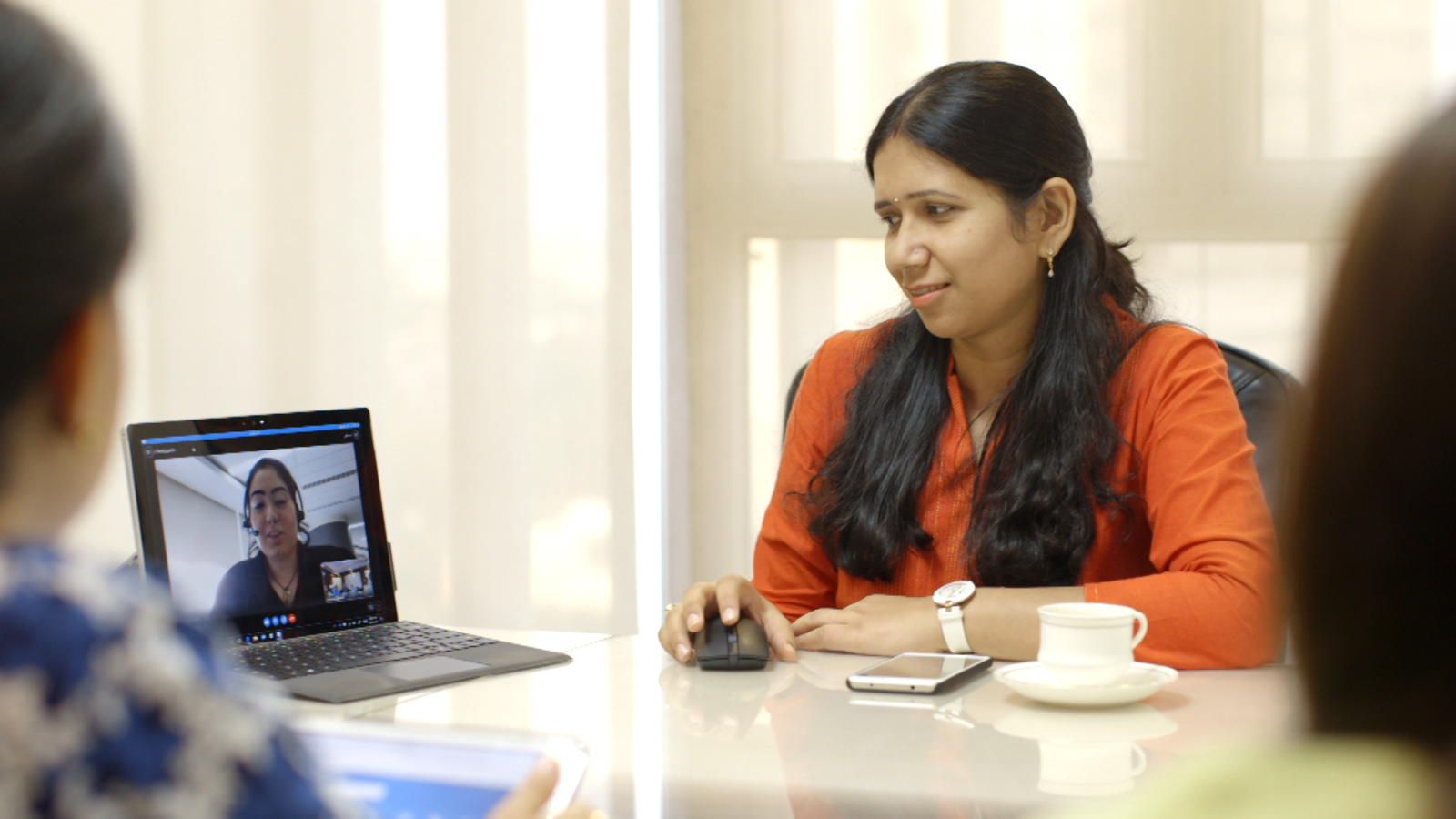
How State Bank of India, a 215-year-old bank, hit refresh to become a modern workplace
It is a big day for Rachna Gupta, an Assistant Manager at State Bank of India (SBI). After dropping her 11-year-old daughter at school, she hurries to the Mayur Vihar Metro station for her daily hour-long commute to Chandni Chowk. Her thoughts are preoccupied with the upcoming presentation. “Will there be any last-minute hiccups?” she nervously wonders.
Her smartphone pings as she exits from the Chandni Chowk Metro station and hails a cycle rickshaw. It is an email from her team asking for changes in her presentation. Unlike earlier, when she’d have to wait to reach her desk to get any work done, Gupta opens the PowerPoint file from OneDrive on her phone. As the rickshaw snakes through the narrow lanes of the original walled city of old Delhi, she makes the changes and shares the new file with her team.
“For customers, banking has transformed completely. But technology has also made the life of employees’ smoother, and tension-free,” she says as she gets off at the 200-year-old heritage building that was once a palace belonging to Begum Samru. The building is a fitting location for SBI, which also traces its roots to pre-Independence India, with the formation of the Bank of Calcutta in 1802.
Gupta is one of the 263,000 employees at SBI, who are reaping the benefits of a modern workplace. This is the story of how one of the oldest banks in the world embarked upon a digital transformation journey for more than quarter-of-a-million employees, who serve over half-a-billion customer accounts.
The challenge
As with any organization with the scale and size of SBI, different technology solutions implemented at different times meant that most solutions were not talking to each other while some were archaic.
Emails were taking hours to get delivered and employees had to clear their inboxes frequently to ensure they had enough space for new emails to come. Documents were being shared as attachments with multiple versions getting created. There was no Global Address List and most employees could not access the official intranet network on their phones – they had to be on their desk, in front of their PC to do anything.
Things were even more difficult for senior employees, who had to travel to various branches for meetings as they could not remotely check-in. Teams in different branches, even in big cities, had no seamless way to connect with each other.
It was becoming clear to the senior leadership that for a behemoth like SBI, workplace transformation was essential to fulfill the service expected by its 500 million customer accounts, and to retain its leadership position in the super-competitive banking sector in India.
“It was vital to take digital transformation to our workforce – empowering them to become digitally enabled. We had to ‘Hit Refresh’,” says Arundhati Bhattacharya, who recently retired as SBI’s Chairperson and who had initiated the digital transformation at the bank.
The need of the hour
SBI required a solution that would address three key challenges. An integrated platform approach for all productivity requirements; simple to apply use-cases allowing for employees even in remote areas to be included; and an agile platform leveraging cloud that would give the bank the scale of operations required. Additionally, it was important to give employees a seamless experience across various devices like mobiles, tablets and PCs.
Microsoft’s modern cloud technology fitted perfectly with SBI’s vision of a contemporary workplace. Microsoft assessed the work environment and created role-based access profiles, including all employees from Chief Managers to Officers, clerical staff and other categories of employees, even those who have retired. Today, 263,000 SBI employees are on Office 365, using services like Exchange Online, OneDrive, Skype for Business, SharePoint Online, among others as a part of their daily work tools.
“The mobility solution from Microsoft helps us exercise continuous control over all the enabled devices. Our employees will now experience a modern digital workplace platform that will empower them to collaborate effectively from any device anywhere (Android, iOS, Mac and Windows), provide an integrated experience and reduce complexity,” says Mrityunjay Mahapatra, Deputy Managing Director & Chief Information Officer, SBI.
“We are excited about our partnership with Microsoft. As India’s economy continues to grow, the BFSI sector needs to be well-equipped to address the dynamic market pressures and evolving industry needs. It has become imperative to transform technologically to sustain a competitive edge. A digital culture shift, designing a modern workplace that harnesses digital intelligence and enabling mobility are key aspects. Microsoft’s cutting-edge technology is helping us lead this digital transformation by making it part of our DNA,” says Rajnish Kumar, Chairman, SBI.
On ground zero
At SBI’s Chandni Chowk branch, in the meanwhile, Gupta’s presentation went off better than expected. “The work in banking is the same, but the way we have do it is different. Everyone’s productivity has increased. We are doing the same work with more enthusiasm,” says a beaming Gupta.
As she prepares to leave for home to spend time with her daughter and family, we ask her what her ideal workplace of the future would be. She closes her eyes, “There may be a point in future, where I may close my eyes and imagine myself in office and I will be in office.”
Well, who knows what the future has in store?
Satya Nadella, CEO, Microsoft and Rajnish Kumar, Chairman, State Bank of India express their views on their new partnership. Learn more about it here.





